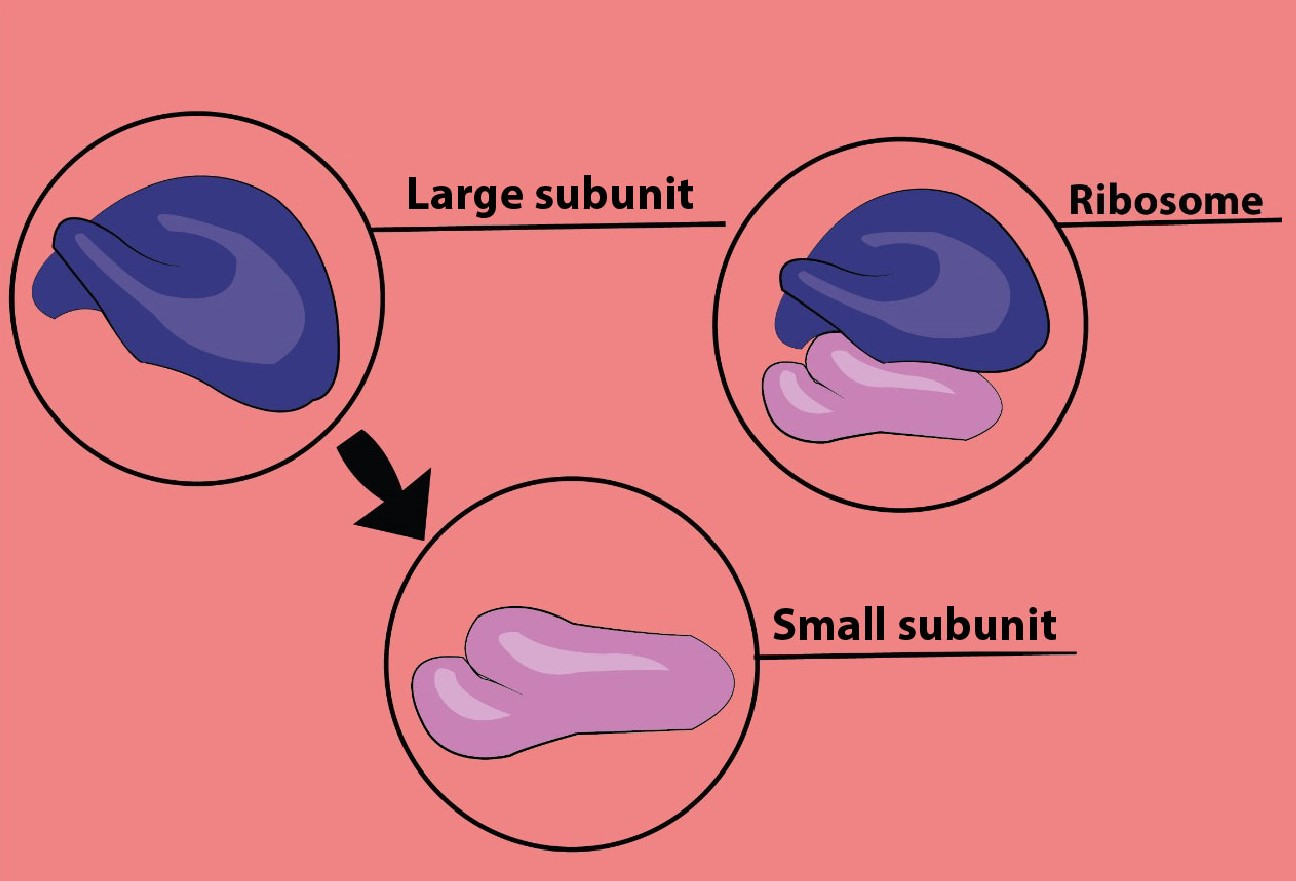
A ribosome is composed of:
(a) Single unit
(b) Two subunit
(c) Three subunit
(d) Four subunit
Answer
582.6k+ views
Hint: Ribosomes are cell organelles present in the cytoplasm. They are composed of rRNA and proteins and are membraneless. They comprise multiple subunits which come together to form a single ribosome.
Complete answer:
The ribosomes are composed of two subunits. One ribosomal subunit is large and has a dome-like shape, while the other ribosomal subunit is smaller in size and occurs above the larger subunit and forms a cap- like structure.
The two ribosomal subunits remain united with each other due to the specific concentration of magnesium ion. When the concentration of magnesium ions reduces below a critical level both ribosomal subunits get separated.
Ribosomes are of two types, the 70S and 80S, where S represents the coefficient which indirectly measures the density and size of ribosomes.
- Functions:
Ribosomes are sites of protein synthesis. The free ribosomes synthesize non- secretory proteins, while ER bound ribosomes synthesize secretary proteins. Free ribosomes synthesize structural and enzymatic proteins for use inside the cell. The attached ribosomes synthesize proteins for transport. Thus, these organelles are also known as protein factories. Newly synthesized proteins are processed with the help of chaperon proteins.
Additional Information:
- 70S ribosomes are made up of ribonucleoproteins in the ratio of 60:40 (RNA: Protein)
- 70S ribosomes consist of 30S smaller subunit and 50S larger subunit
- 80S ribosomes are made up of ribonucleoproteins in the ratio of 40:60 (RNA: Protein) .
- 80S ribosomes consist of 40S smaller subunits and 50S larger subunits.

So, the answer is, “Two subunits.”
Note: The ribosomes of prokaryotes are the 70S and that of eukaryotes is 80S. In mitochondria chloroplasts, ribosomes are the 70S. The reason behind this is that they are believed to have originated from prokaryotes that were engulfed by certain eukaryotes and then developed a symbiotic relationship.
Complete answer:
The ribosomes are composed of two subunits. One ribosomal subunit is large and has a dome-like shape, while the other ribosomal subunit is smaller in size and occurs above the larger subunit and forms a cap- like structure.
The two ribosomal subunits remain united with each other due to the specific concentration of magnesium ion. When the concentration of magnesium ions reduces below a critical level both ribosomal subunits get separated.
Ribosomes are of two types, the 70S and 80S, where S represents the coefficient which indirectly measures the density and size of ribosomes.
- Functions:
Ribosomes are sites of protein synthesis. The free ribosomes synthesize non- secretory proteins, while ER bound ribosomes synthesize secretary proteins. Free ribosomes synthesize structural and enzymatic proteins for use inside the cell. The attached ribosomes synthesize proteins for transport. Thus, these organelles are also known as protein factories. Newly synthesized proteins are processed with the help of chaperon proteins.
Additional Information:
- 70S ribosomes are made up of ribonucleoproteins in the ratio of 60:40 (RNA: Protein)
- 70S ribosomes consist of 30S smaller subunit and 50S larger subunit
- 80S ribosomes are made up of ribonucleoproteins in the ratio of 40:60 (RNA: Protein) .
- 80S ribosomes consist of 40S smaller subunits and 50S larger subunits.

So, the answer is, “Two subunits.”
Note: The ribosomes of prokaryotes are the 70S and that of eukaryotes is 80S. In mitochondria chloroplasts, ribosomes are the 70S. The reason behind this is that they are believed to have originated from prokaryotes that were engulfed by certain eukaryotes and then developed a symbiotic relationship.
Recently Updated Pages
The number of solutions in x in 02pi for which sqrt class 12 maths CBSE

Write any two methods of preparation of phenol Give class 12 chemistry CBSE

Differentiate between action potential and resting class 12 biology CBSE

Two plane mirrors arranged at right angles to each class 12 physics CBSE

Which of the following molecules is are chiral A I class 12 chemistry CBSE

Name different types of neurons and give one function class 12 biology CBSE

Trending doubts
One Metric ton is equal to kg A 10000 B 1000 C 100 class 11 physics CBSE

What is 1s 2s 2p 3s 3p class 11 chemistry CBSE

Discuss the various forms of bacteria class 11 biology CBSE

State the laws of reflection of light

Explain zero factorial class 11 maths CBSE

An example of chemosynthetic bacteria is A E coli B class 11 biology CBSE




